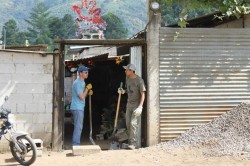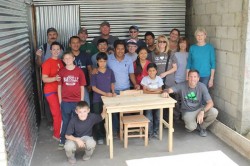Last time we talked, we discussed some of the difficulties that affect team performance. Today we’re going to narrow it down to the two key areas that matter most: rapport and results. In the big picture, the relationships within the team and the quality/quantity of work that gets done are the only things that really matter. If you go back to the list at the link above and read through it, a team with an orientation of high rapport and high results will overcome virtually all of the potential roadblocks to solid long term performance. But what exactly do I mean by “rapport” and “results?” Let’s delve into those two categories a little deeper.
Rapport AKA “How you communicate”
 What is rapport, anyway? In short, it’s the interpersonal interactions that make up the overall communication health of the team. Do they get along? Do they interact well? Do things flow? Are there bottlenecks? What about gossip? Do people go beyond the basic required communication to keep each other in the loop and up to date? Do people hoard information or share freely?
What is rapport, anyway? In short, it’s the interpersonal interactions that make up the overall communication health of the team. Do they get along? Do they interact well? Do things flow? Are there bottlenecks? What about gossip? Do people go beyond the basic required communication to keep each other in the loop and up to date? Do people hoard information or share freely?
It’s a different setting and a different purpose, but the recent mission trip I went on was a good example of this. Having a good rapport with the team (especially when nobody around us spoke our language!) was critical to the success of our mission. You see me here talking with our local guide about the progress of the project, next steps, etc. Is rapport/communication with and among your team a priority for you? How much effort do you expend to make sure that meaningful communication is occurring?
Results AKA “What you actually accomplish”
 The other side of the team equation is results. What are they actually doing? How are they doing it? What’s being accomplished? Are the results of high quality, or just high quantity? Are they even measurable (hello, knowledge economy!)?
The other side of the team equation is results. What are they actually doing? How are they doing it? What’s being accomplished? Are the results of high quality, or just high quantity? Are they even measurable (hello, knowledge economy!)?
Again, going back to the example of the recent mission trip above, I think we can glean some ideas from the experience. As you can see in the photo here, we built a home and provided the only furniture the family owns as a “house warming” gift, as we call it here in the US. Regardless of what else happened with the team while we were there, the end result is very clear. Are the results of your team’s efforts as clear and easy to define? What are you doing to help define what success looks like in terms your team can relate to?
Both are necessary
Recently I posted on the importance of team community, and one commenter mentioned that without a focus on results, the team would trend toward a purely social function. The flip side of that discussion is a team with only a focus on results is a loose group of people pursuing their own agendas.
The other piece is that they are intertwined. Keeping each other in the loop allows for a good work flow in and among the members of the team–that prevents burnout and an unbalanced workload for any individual person. One of my favorite sayings with regard to teams is “if one of us fails, we all fail.” The work environment that is conducive to my best performance is one where the team is supportive, communicative, and doesn’t just abandon anyone to fail.
 In the graphic here, you can see the four quadrants of team performance. The rapport/results measurements help to put a team into a specific quadrant. Where they fall in the measurements helps to determine what the steps are to improve the team’s performance. The things a Pretending team need to do to improve are not necessarily the same things a Befriending team needs to do, for instance.
In the graphic here, you can see the four quadrants of team performance. The rapport/results measurements help to put a team into a specific quadrant. Where they fall in the measurements helps to determine what the steps are to improve the team’s performance. The things a Pretending team need to do to improve are not necessarily the same things a Befriending team needs to do, for instance.
Something is coming…
Hopefully now you have a better understanding of the key elements of team performance. But now the question truly is this: how do you measure it? Later this week we’ll look at solving that problem with a new tool created by Dr. Daniel Crosby, an organizational psychologist and business leader with a heart for making teams function better. Stay tuned for more info and to learn how you can get exclusive access to the new tool.
If you had to break down your team’s performance into rapport and results, where would they fall on the scale seen here?Â